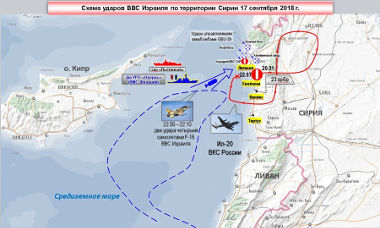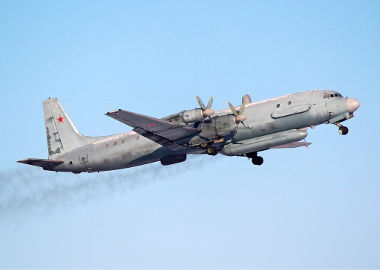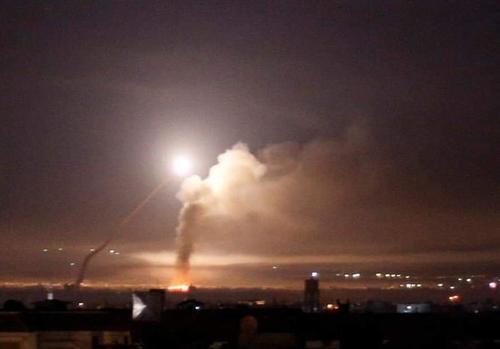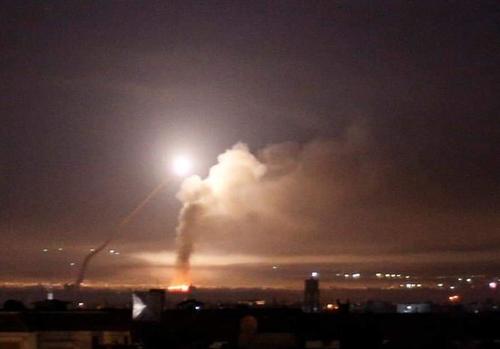Yesterday Turkey and Russia agreed on a further de-escalation in Idelb province in Syria (see the update here). This agreement takes away the chance of an imminent wider war in which the US and some of its allies would use a fake ‘chemical attack’ as a pretext to launch missiles against a large number of Syrian government targets and military positions.
A peaceful solution of the Idleb situation is unsatisfying for Israel. The successful Syrian defeat of the Jihadi enemy inside the country would allow Syria and its allies to concentrate their forces against Israel. Israel wants the Syrian government destroyed and the country in chaos.
On Sunday September 16 Israel tried to hit an Iranian Boeing 747 freight plane at Damascus airport. The plane allegedly carried an Iranian copy of the Russian S-300 long range air defense System for the Syrian army.
On Monday around 10:00 pm local time four F-16 jets of the Israeli air force, coming from the sea, launched missiles against at least three targets on Syria’s coast. The strike came only hours after Israel released satellite images of what it called “strategic targets” in Syria. The integrated Syrian and Russian air-defenses responded.
The Israeli air force had warned the Russian forces in Syria only one minute before the strike. A Russian IL-20 electronic warfare airplane (red line) was preparing to land at the Russian airport near Latakia just as the Israeli attack (blue) happened.

Source: Russian defense Ministry – bigger
The IL-20 was hit 35 kilometers off the coast by a S-200 air-defense missile fired by the Syrian military towards the Israeli attack. There were 15 Russian soldiers on board of the plane which were likely all killed. Russian ships search for survivors. Some wreckage of the plane was found at sea 27 kilometers west of the village of Banias.

IL-20 electronic warfare version – bigger
The Israeli attack came out of the same direction as the Russian IL-20. The large 4 propeller plane creates a much bigger radar reflection than the small F-16s fighter jets. The S-200 missiles have a semi-active radar homing seeker. These are passive detectors of a radar signal which is provided by an external source, in this case the Syrian and Russian radars on the ground. While the missile was aimed at the F-16 its seeker likely mistook the larger radar reflection of IL-20 for the intended target.
At the same time as the Israeli air force attacked, a Russian frigate (red) near the coast detected missile launches from the French Frigate Auvergne (blue) nearby. The French frigate carries air, ship and land attack missiles. France denied “any involvement in the incident.” But it seems that this only referred to the IL-20 incident and did not deny launching missiles.
Even more was going on says Haaretz:
Not only Russian and (allegedly) Israeli and French aircraft and missiles were in the air. Civilian radar also tracked British Royal Air Force aircraft, which, unusually, had switched on their transponders and gone into holding patterns – most likely to avoid being somehow involved in the exchange of fire over Latakia.
The Russian Defense Ministry accuses the Israeli government of a deliberate set up:
‘Israel did not warn the command of the Russian troops in Syria about the planned operation. We received a notification via a hotline less than a minute before the strike, which did not allow the Russian aircraft to be directed to a safe zone,’ Russian Defense Ministry spokesman Maj. Gen. Igor Konashenkov said.
After the Israeli attack the Syrian state TV showed the headquarters of the Technical Industries Agency near Latakia on fire. Other targets were near Jableh, south of Latakia, and Homs. At least ten people were wounded due to these attacks.
The Russian military spokesman also accused Israel of “hostile action” against Russian forces:
‘We see these provocative actions of Israel as hostile,’ Konashenkov said, adding that 15 Russian servicemen were killed as a result of the ‘irresponsible actions’ of Israel’s Defense Forces, which violated ‘the spirit of the Israeli-Russian partnership.’
According to the spokesman, the Russian Defense Ministry reserves the right to an “adequate response” following the Israeli attack.
Israel (and France?) are deliberately provoking the Syrian and Russian forces. It hopes for a response that allows it play the victim and to call on US President Trump for help and protection. The help would come in the form of a US, British, and French attack on the Syrian government and Syrian military targets.
Russia will certainly take revenge for the Israeli provocation, but will likely do so in the political arena. On Netanyahu’s personal request Russia had stopped the delivery of original Russian S-300 long range air-defense missiles to the Syrian military. These would have been less likely to veer off towards the wrong target. In consequence an Iranian 747 was damaged and 15 Russian soldiers were killed. Netanyahu can forget about any further such “favors” from Moscow.
Reprinted with permission from Moon of Alabama.


